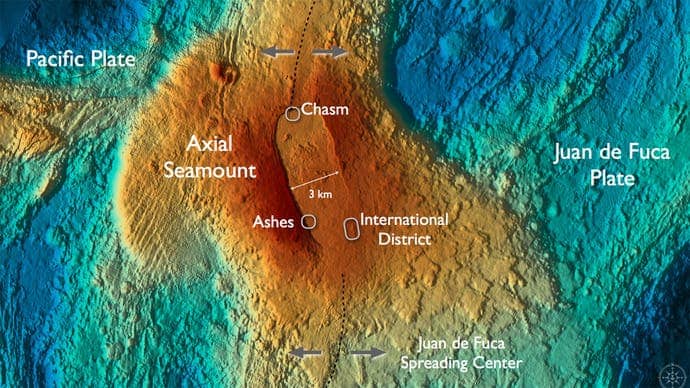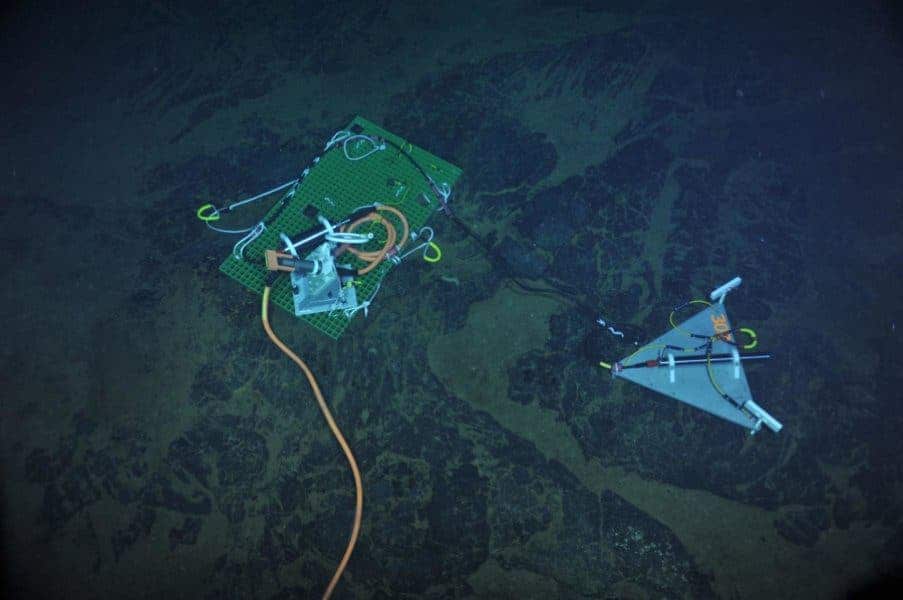A seafloor observatory has gathered a trove of data from the 2015 eruption of Axial Volcano, some 480 km off the coast of Oregon, allowing researchers to “see” the eruption in unprecedented detail.

Whenever a volcano erupts, it rumbles and shakes, similar to an earthquake in some ways. It sends ripples (seismic waves) in all directions, which can be picked up by specialized equipment. By then studying these seismic waves, we can tell a lot about the geologic setting of the area, something particularly interesting for the Axial Volcano, where two tectonic plates are moving apart. Basically, geologists believe that by studying this volcano they can get a better understanding of the volcanic activity around mid-oceanic ridges.
“The new network allowed us to see in incredible detail where the faults are, and which were active during the eruption,” said lead author William Wilcock, a UW professor of oceanography. The new paper in Science is one of three studies published together that provide the first formal analyses of the seismic vibrations, seafloor movements and rock created during an April 2015 eruption off the Oregon coast. “We have a new understanding of the behavior of caldera dynamics that can be applied to other volcanoes all over the world.”
The Axial Volcano is a particularly complex case. It is part of the Axial Seamount in the Juan de Fuca Ridge, located both at the center of both a geological hotspot and a mid-ocean ridge. This means that it is “fed” by underlying mantle that is anomalously hot compared with the surrounding mantle and also by magma exposed by the tectonic spreading – two unrelated phenomena which make everything more difficult to understand.

Credit: University of Washington/OOI-NSF/CSSF-ROPOS
The Axial Seamount is the most active volcanic site in the North Pacific. Study of magnetic delineations along the seamount have modeled the ridge’s history up to 30 million years ago. The place is marked by an unusually rectangular caldera, with several dome-like structures. An advantage of studying this particular volcano is that the location of the magma chamber is well known, and Axial is quite active.
“Axial volcano has had at least three eruptions, that we know of, over the past 20 years,” said Rick Murray, director of the NSF’s Division of Ocean Sciences, which also funded the research. “Instruments used by Ocean Observatories Initiative scientists are giving us new opportunities to understand the inner workings of this volcano, and of the mechanisms that trigger volcanic eruptions in many environments.
“The information will help us predict the behavior of active volcanoes around the globe,” Murray said.
Most people don’t know, but the vast majority of volcanic activity takes place underwater – which makes sense when you consider that most of the Earth’s surface is covered in water, and the vast majority of volcanoes take shape at the edge of oceanic tectonic plates.
Journal Reference: W. S. D. Wilcock, M. Tolstoy, F. Waldhauser, C. Garcia, Y. J. Tan, D. R. Bohnenstiehl, J. Caplan-Auerbach, R. P. Dziak, A. F. Arnulf, M. E. Mann. Seismic constraints on caldera dynamics from the 2015 Axial Seamount eruption. Science, 2016; 354 (6318): 1395 DOI: 10.1126/science.aah5563


